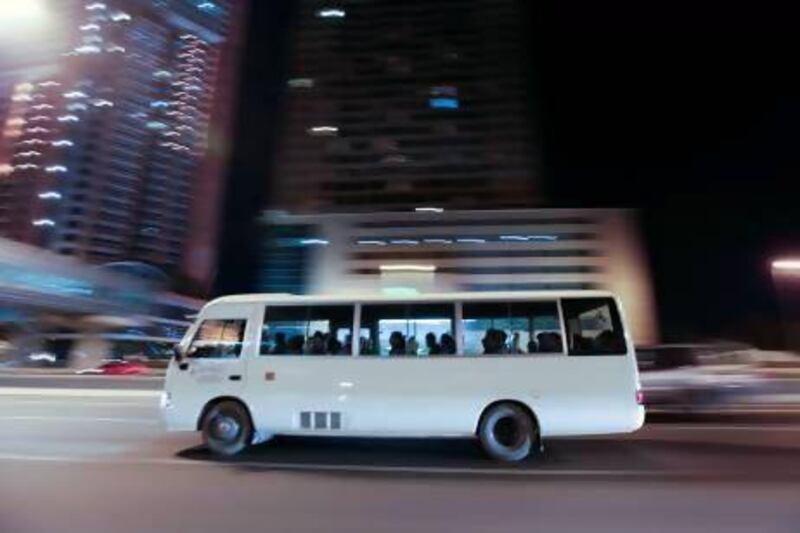ABU DHABI // The very features that can make a bus seem unsafe - being big, heavy and difficult to manoeuvre - can actually help protect passengers in a crash.
Because they are so bulky and sturdy, most other vehicles would come off second-best in a collision, while the acceleration that forces passengers from their seats is largely absorbed by the vehicle's mass.
Passengers are also seated higher up off the road, affording a greater degree of impact protection.
By law, seat belts are only required for the front three seats and the last seat on large school buses. There are no specific requirements for commercial transport, although federal law requires passengers in the front seat of a vehicle to wear seat belts or the driver faces a Dh400 fine and four black points.
"Back home in Australia we have seat belt laws for buses," said Craig Sherrin, chief executive of the Emirates Driving Company, adding the company would support compulsory wearing of seat belts on school buses. "It's an opportunity for the UAE to take it to the next step."
Research in the US 10 years ago by the National Highway Traffic Safety Administration found lap belts had little if any benefit in reducing injuries during a severe frontal crash.
"Lap belts could increase the incidence of serious neck injuries and possibly abdominal injury among young passengers in severe frontal crashes," the researchers said.
One safety feature required on school and worker buses is breakable glass windows to allow escape should the bus overturn and they get trapped. School buses also require emergency doors in the back.
School buses belonging to Emirates Transport - the government agency that oversees public school bus fleets - undergo an annual maintenance service and a check-up every two months. Commercial transport buses should have maintenance checks every 20,000 kilometres.
rruiz@thenational.ae






